
Slitterhead was provided by Bokeh Game Studio for review. Thank you!
I have been trying my hardest not to follow Slitterhead's announcements since it was released. This wasn't because I didn't like how it looked, but I loved how it looked so much that I didn't want any spoilers. This is Bokeh Game Studio's first game, directed by Silent Hill creator Keiichiro Toyama, and I wanted to really be surprised by the kind of game and the story. After playing it, I was left a bit torn, with the general gameplay feels great, but the execution is stiff.
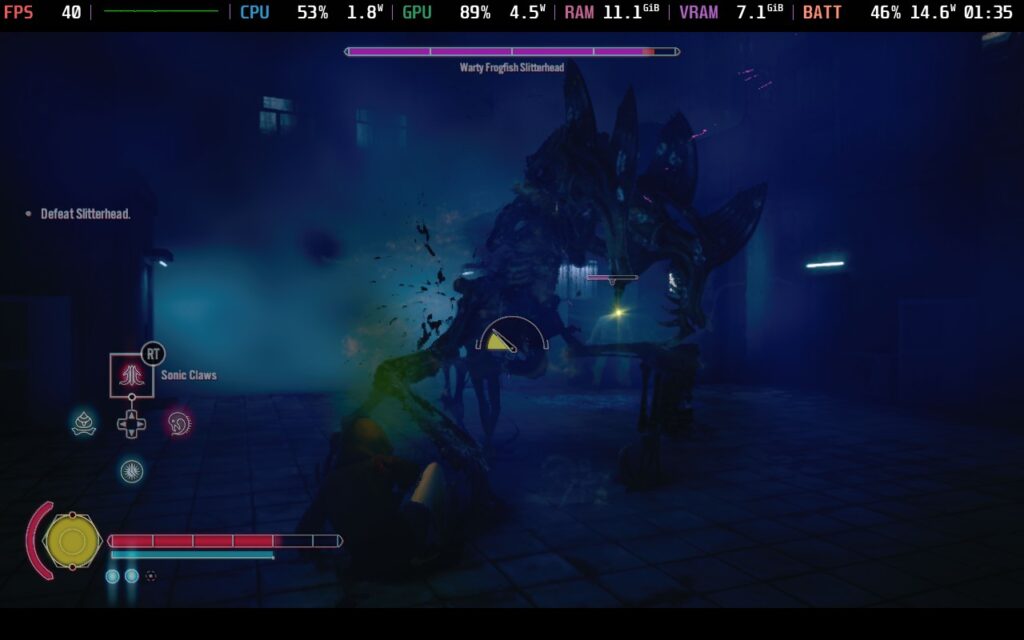
Slitterhead is a third-person fighter that has you running around a section on the map and fighting grotesque monsters known as Slitterheads. Each character has a different weapon to attack and four different abilities to utilize, all of which contribute to how you take down your enemies. You can also block and deflect enemy attacks, which can come in different directions, and you will have to move your right stick in the corresponding direction to reflect properly. If you do it enough times, you can enter a slow-mo mode to attack them even more.
While the combat is a bit basic, I liked it. You only have one attack button, but you can execute different attacks depending on the direction you hold down on the left stick. Mixing this up with the abilities is great; each character feels unique. I enjoyed using all of them as each had an ability I enjoyed playing around with, especially the one where my weapon would turn into a mini-gun or javelin. I am glad since games like this can usually get me wanting to just stick to one or two characters. I also liked the deflecting mechanic, which feels so rewarding when I get into that slow-motion mode.
Your health and weapon are all based on blood, which can be replenished as you fight. Some abilities will also drain your health, while durability decreases the more you block. You can replenish the durability by deflecting, and managing both your health/blood and durability will be very important. It is a little annoying to have to absorb blood off the ground and heal, which takes time, and I usually get attacked while trying to heal.
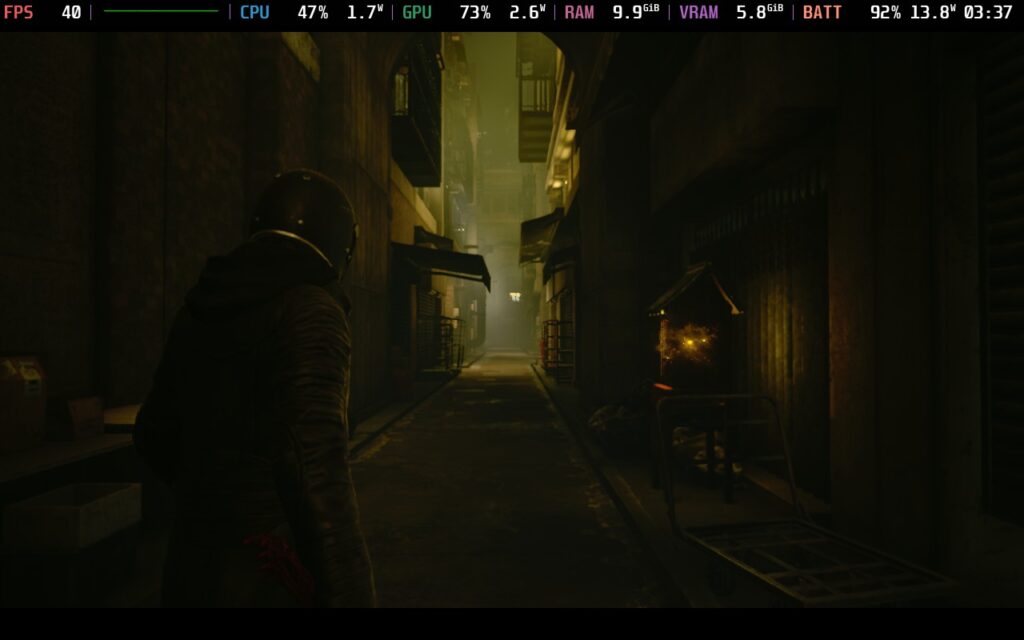
However, the real winner in combat is how you utilize Hyoki, the character you are controlling the whole time. Hyoki is this entity or spirit that can possess bodies, and throughout the game, you will be constantly switching to different bodies on the fly. This also translates into combat, where you will fight enemies with many people around you, but they won't do much until you take control of them. I used this more in the tougher boss fights to strategically attack and swap to another person further away. The enemies usually won't notice you switching just yet, so you have a chance to revive characters or attack without them reacting immediately.
You go into each mission selecting two "Rarities" to start. These members of your team have extra special abilities and distinct weapons due to resonating well with Hyoki. In fights, you can swap between each of them, as well as random civilians around. The civilians don't have more in-depth abilities and only one weapon, but they are extremely useful.
Outside of fighting, you will run around the city, usually following the story path set in front of you. Some missions give you a bit more freedom with some stuff to collect, like Hyoki's memory fragments for some extra skill points and shrines that have you fight specific monsters that give you clothing items to change your character's appearance, but for the most part, you will just be fighting or running around. No mission feels too long, and there are some interesting things you can do, like flinging yourself from neon billboard to neon billboard and changing to other characters to get through specific sections of the map.
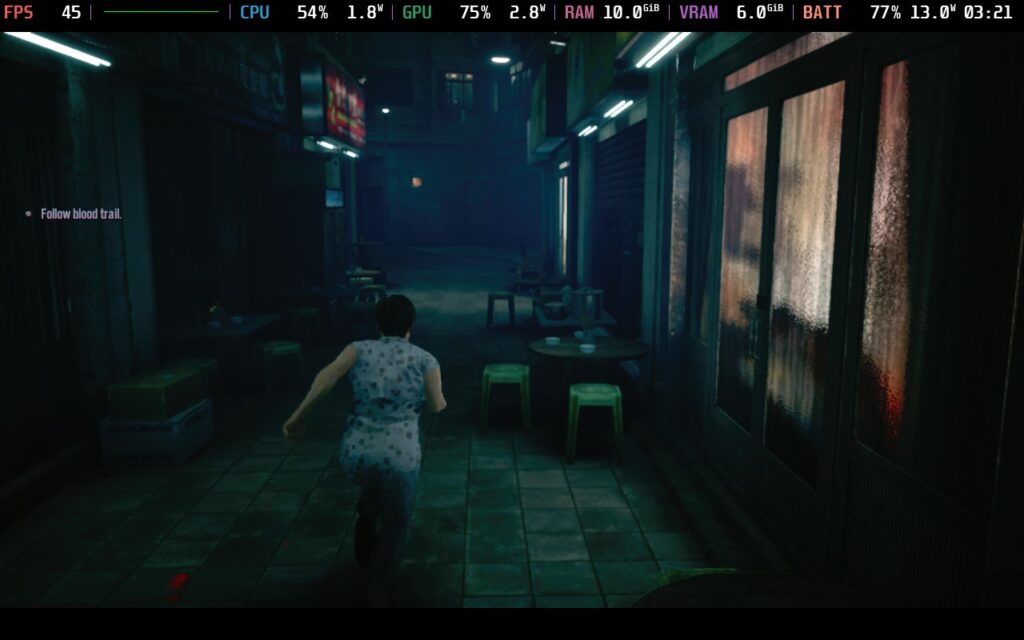
When not on a mission, you can customize your characters aesthetically and level up their skills. Using the skill points you get, you can make their weapon and abilities more powerful, as well as some passive abilities that increase health, weapon durability, and more. This is also where you can talk to your team, where new missions are unlocked and you can learn a bit about their backstory.
I love the story of Slitterhead, though it felt a little hard to follow along in the beginning. Hyoki randomly came into this world without memories and discovered they could possess beings. The only thing they know is that they must eliminate the Slitterheads, so they start putting together a team of talented individuals who can resonate with him well and really take them down.
Without spoiling anything, it can feel a little confusing at times. The bulk of the story and background are told in text sequences when you talk to your team outside of combat, and it took me a while to grasp what was happening. You can unlock more of Hyoki's backstory by finding memory fragments across different missions, but it is cryptic and doesn't make much sense until later. I also found it a bit hard to discover where some of these memory fragments and other collectibles were since the game doesn't give you hints about where they are. They aren't impossible to find, and I figured out where most are just by exploring, but it was still a little frustrating.
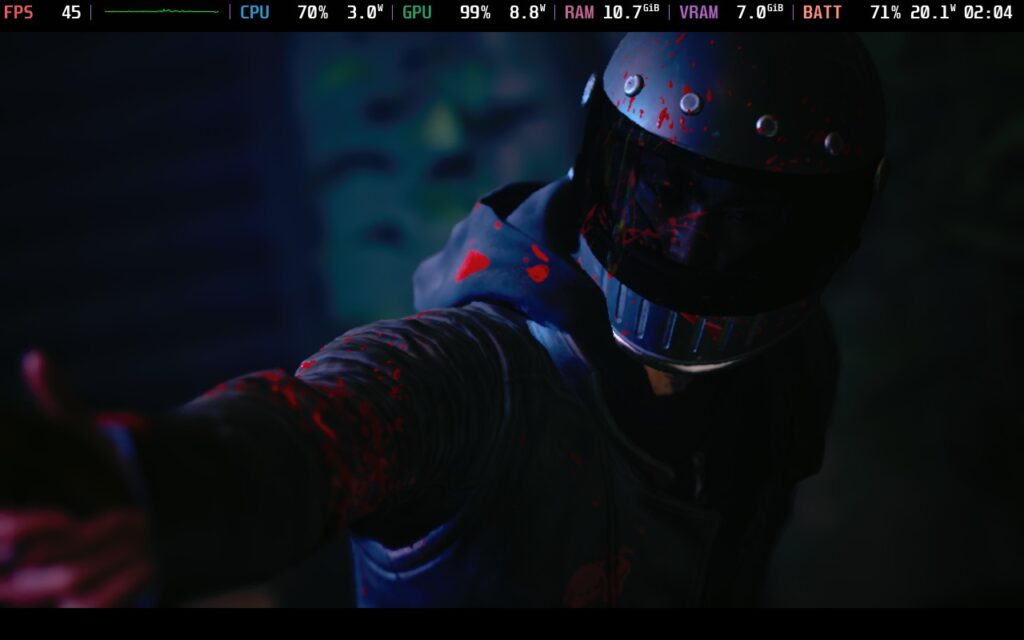
The characters themselves were all different enough to stand out, but I wasn't invested in any of them. I knew who each of them was, but the lack of voice acting and the way the story was told stopped me from resonating with any of them. Playing around with each person was nice, but I never felt attached to anyone specifically.
There's also a time loop mechanic in-game, so you must replay some levels. Usually, I would find this a bit obnoxious since I ended up playing the same levels multiple times, but each time, it had some different element to it, keeping it fresh. I didn't feel like any place was overused too much, and Bokeh implemented this very well.
There is also a true ending to get, which I didn't find overly hard to do.
As for the visuals, I was wonderfully amazed by them. There are some areas that are a little more dull looking like the grey hallways of a building, but there were many more gorgeous sites like the streets lit up by the countless neon signs coming off of buildings. I loved what I saw more than not, and while it could have used some better lighting at times, I walked away very happy.
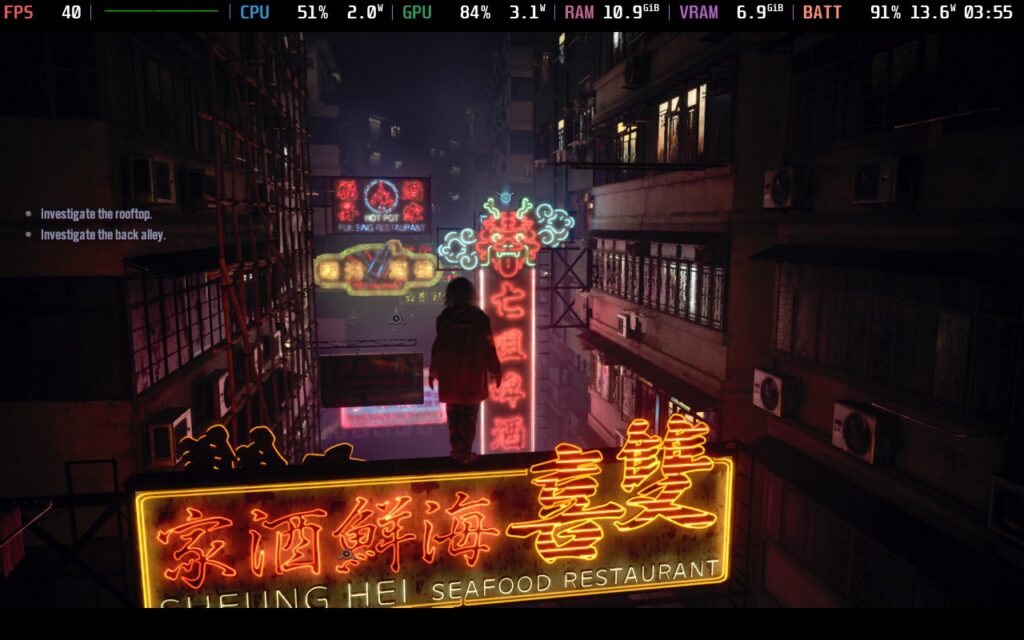
The way the game incorporates the Slitterheads and how they pop out of humans is just brutal in all the right ways. I found it disturbing each time they morphed into the enemies I saw before me and how some of the smaller enemies would suck up and chew off a human's head. If you don't like body horror/gore, you will hate this, but I found it fascinating how it was animated.
Then, we have Steam Deck performance, which works well for the most part.
Slitterhead is a very playable game on the Steam Deck, and it looks especially good on the OLED screen, but I encountered a couple of hiccups in my playthrough. Performance can be a mixed bag, depending on the area. A lot of them can hit upwards of 50-60 FPS, but in others, it will drop heavily down to around 38-42. Most of these heavier areas did stay above 40 on low settings, not including some cutscenes that went to 36-37, so my recommended settings mean setting this to a 40 FPS cap with low-quality settings.
Luckily, the low settings didn’t hurt the visual quality too much. It’s much less noticeable on the smaller screen, but compared to Medium and High quality presets, the only option we can change for graphical settings, it still holds up. I didn’t notice any pop-in or low-quality textures and I only saw a slight amount of blur in some scenarios.
While I love the smoothness of 40 FPS, especially in fights, there are some instances where it could drop. Here, I recommend playing at 30 FPS while keeping settings low for the most stable experience. It is still very playable, and will save a little battery, but it definitely doesn't feel as fluid:
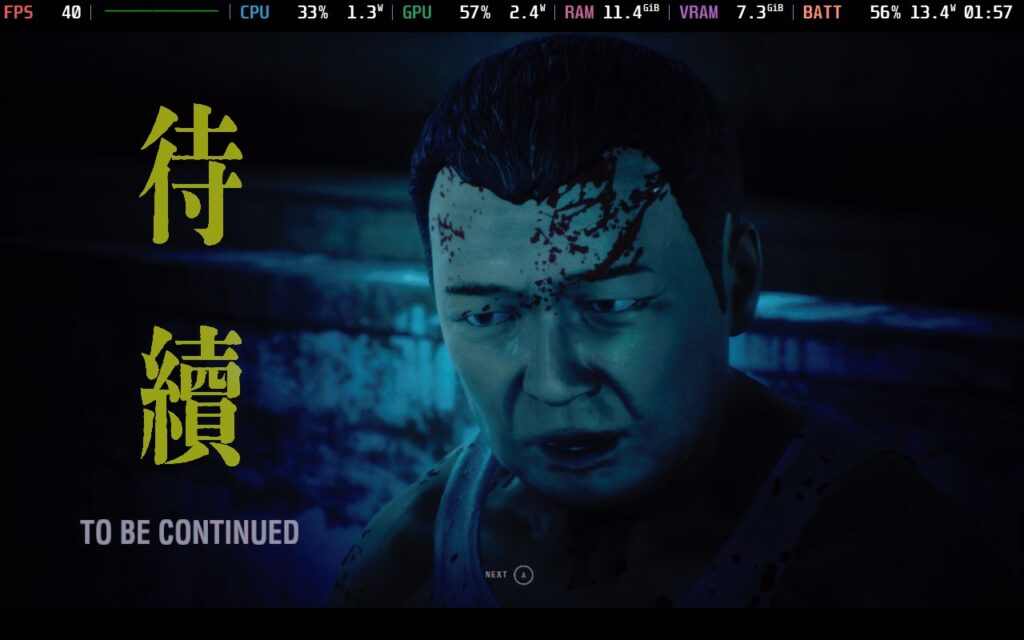
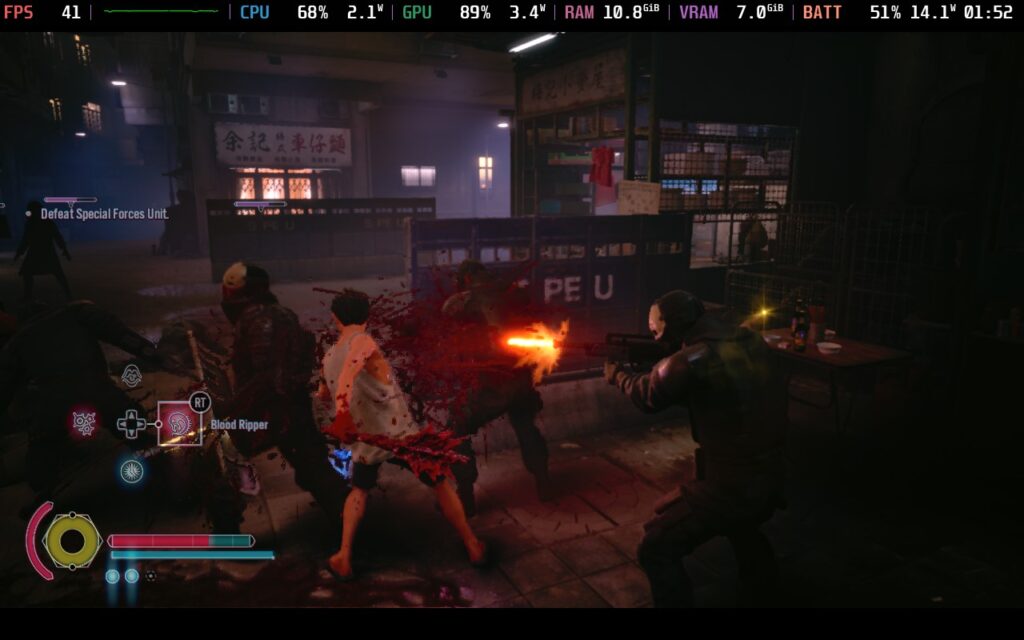
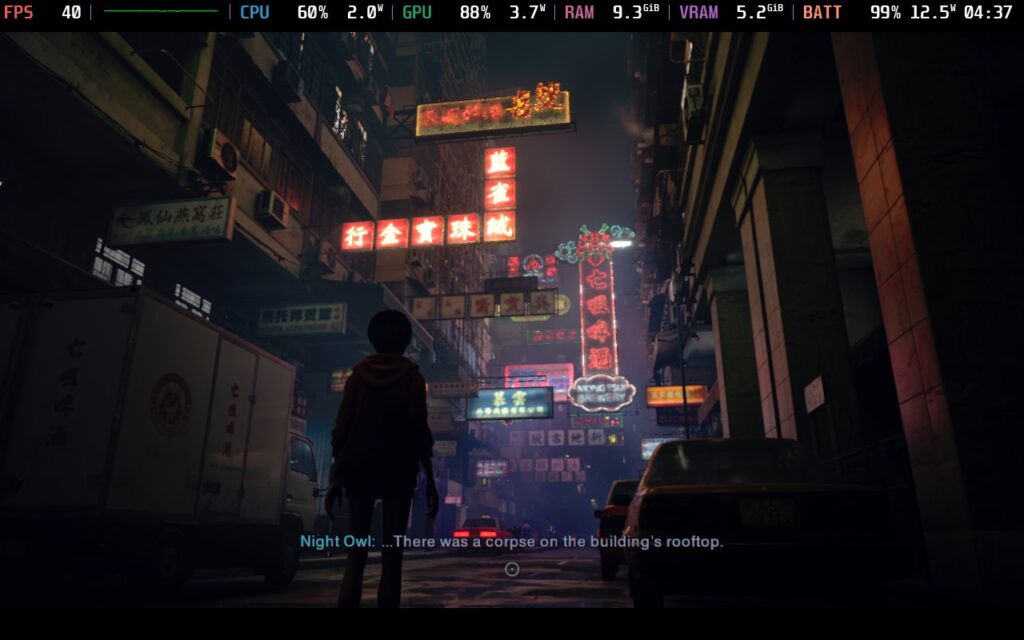
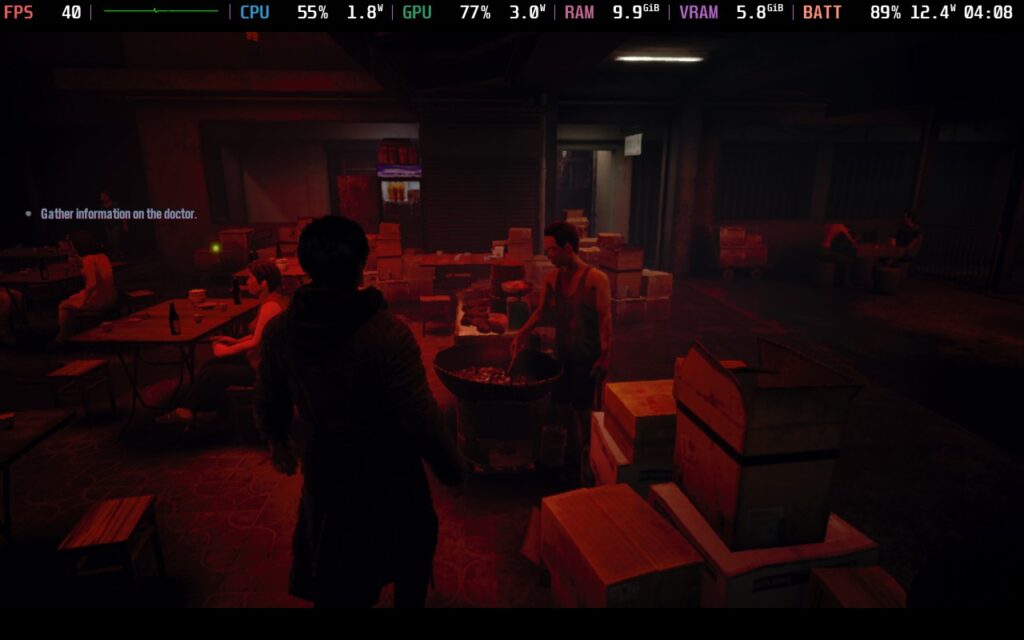
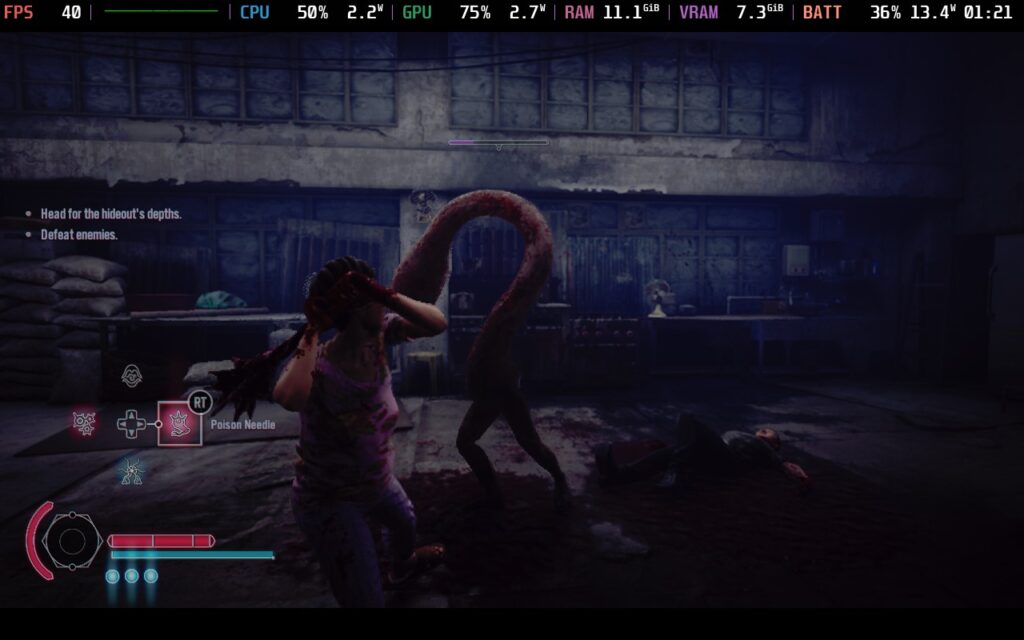
In Slitterhead, you can change your difficulty, camera auto-turning, climbing assist, screen distortion, controller vibration, camera sensitivity, and whether it's inverted, as well as audio settings.
The game doesn't support 16:10 resolutions, but it does have cloud saves and controller support. The game supports HDR as well.
Slitterhead is a mixed bag at times, but it is an intriguing and enjoyable time for the most part. The combat feels great and utilizing abilities, regular attacks, deflecting, and swapping bodies on the fly makes for a very rewarding experience. The story itself is wonderful, and the visuals exemplify the horrific nature of these monsters and how they form. It can feel a bit stiff at times, and I wasn't a fan of how the backstory was told, but it's still a great time that feels unique against the current lineup of horror games.
It is hit or miss on the Steam Deck in some areas, but it will hold for the most part. It feels great on the portable screen, especially with HDR support. Overall, this is a wonderful experience, and I highly recommend it!
Our review is based on the PC version of this game.
If you enjoyed this review, be sure to check out the rest of the content on SteamDeckHQ! We have a wide variety of game reviews and news that are sure to help your gaming experience. Whether you're looking for news, tips and tutorials, game settings and reviews, or just want to stay up-to-date on the latest trends, we've got your back.
Slitterhead is a unique horror experience with some intriguing combat that helps get through the stiffer parts of the game, and it is playable on Steam Deck.

Do you also get pso stutters on the deck? Been playing it on my rog on medium and get some stutters from time to time. Maybe I should switch to my deck??
I didn't feel any stutters as I was playing, but I would definitely try on the Steam Deck to see if it carries over.